Crypto Exchanges


A crypto exchange, also known as a cryptocurrency exchange, is an online platform that allows users to buy, sell, trade, and sometimes store various cryptocurrencies. These exchanges can operate similarly to stock exchanges, but instead of trading traditional assets like stocks and bonds, they facilitate the trading of digital assets such as Bitcoin, Ethereum, Litecoin, and many others.
Types of Crypto Exchanges
Centralized Exchanges (CEX)
Decentralized Exchanges (DEX)
Hybrid Exchanges
Centralized Exchanges (CEX)
Description: These are the most common type of crypto exchanges. They are operated by a central organization that acts as an intermediary between buyers and sellers.
Examples: Coinbase, Binance, Kraken.
Features: User-friendly interfaces, high liquidity, customer support, and additional services like staking and lending.
Security: Users' funds are typically stored on the exchange, which can be a security risk if the exchange is hacked.


Decentralized Exchanges (DEX)
Description: These operate without a central authority, allowing peer-to-peer trading directly between users.
Examples: Uniswap, SushiSwap, PancakeSwap.
Features: Greater privacy, users have control over their funds, reduced risk of hacking since there is no central repository of funds.
Security: Generally considered more secure as users retain control of their private keys, but can be more complex to use.
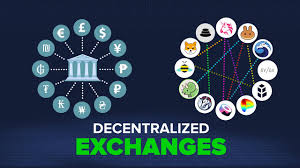

Hybrid Exchanges
Description: Combine features of both centralized and decentralized exchanges to offer a balance of security, user control, and convenience.
Examples: Nash, Qurrex.
Features: Enhanced security with the user experience of a centralized exchange.
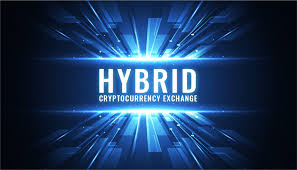

Key Features of Crypto Exchanges
Trading Pairs: These are the various cryptocurrencies that can be traded against each other. Common trading pairs include BTC/USD, ETH/BTC, etc.
Liquidity: The ability to buy or sell an asset without causing a significant impact on its price. High liquidity means a high volume of trades and typically lower spreads between buy and sell prices.
Order Types: Different types of orders such as market orders, limit orders, and stop orders that traders can use to execute trades based on their strategies.
Security Measures: Includes two-factor authentication (2FA), cold storage, and insurance funds to protect users' assets.
Fees: Exchanges charge fees for transactions, withdrawals, and other services. These can vary widely between platforms.
How to Use a Crypto Exchange
Registration: Create an account by providing necessary information and completing any required identity verification.
Funding: Deposit funds into the exchange, either through bank transfers, credit cards, or by transferring cryptocurrencies from a wallet.
Trading: Select the trading pair you are interested in, choose the type of order, and execute the trade.
Withdrawal: Transfer your cryptocurrencies to a secure personal wallet or withdraw fiat currency to your bank account.
Risks and Considerations
Security Risks: Exchanges can be targets for hackers. It's important to choose reputable exchanges and use security measures like 2FA.
Regulatory Risks: The regulatory environment for cryptocurrencies varies by country and can affect exchange operations.
Volatility: Cryptocurrencies are known for their price volatility, which can lead to significant gains or losses.
Crypto exchanges are crucial for the functioning of the cryptocurrency ecosystem, providing liquidity, price discovery, and accessibility to a wide range of digital assets.
How to choose a Crypto Exchange?


Choosing a crypto exchange involves considering several factors to ensure you select a platform that best meets your needs in terms of security, usability, fees, and available features. Here are some key aspects to consider when choosing a crypto exchange:
1. Security
Reputation: Research the exchange's history for any past security breaches or hacks. Reputable exchanges often have stronger security measures in place.
Security Features: Look for features such as two-factor authentication (2FA), withdrawal whitelist, cold storage, and insurance funds.
2. Regulation and Compliance
Licensing: Check if the exchange is registered and compliant with local regulations and licensing requirements.
KYC/AML: Ensure the exchange follows Know Your Customer (KYC) and Anti-Money Laundering (AML) procedures, which can provide an additional layer of security and regulatory compliance.
3. Fees
Trading Fees: Compare the fees charged for trading activities. These can include maker/taker fees and can vary based on your trading volume.
Withdrawal and Deposit Fees: Check for any fees associated with depositing and withdrawing funds, whether in fiat or cryptocurrency.
Hidden Fees: Be aware of any potential hidden fees that may not be immediately apparent.
4. Supported Cryptocurrencies
Variety: Ensure the exchange supports the cryptocurrencies you are interested in trading.
Trading Pairs: Check the availability of trading pairs that suit your trading strategy.
5. Liquidity
Volume: Higher liquidity ensures you can buy or sell assets with minimal price slippage. Look for exchanges with high trading volumes.
Order Book Depth: Deep order books can provide better price stability and execution.
6. User Experience
Interface: A user-friendly interface is important, especially for beginners. Advanced traders might look for more sophisticated trading tools and charts.
Customer Support: Good customer support can help resolve issues quickly. Check for availability and response times.
7. Geographic Restrictions
Availability: Ensure the exchange operates in your country and complies with local laws.
Language Support: If English is not your first language, check if the exchange offers support in your language.
8. Deposit and Withdrawal Options
Fiat Support: If you plan to deposit or withdraw fiat currency, ensure the exchange supports your preferred payment methods (e.g., bank transfers, credit/debit cards).
Crypto Deposits/Withdrawals: Check the process and fees for depositing and withdrawing cryptocurrencies.
9. Advanced Features
Trading Tools: Advanced traders might look for features like margin trading, futures, and options.
Staking and Lending: Some exchanges offer staking and lending services, which can provide additional income opportunities.
10. Reputation and Reviews
Community Feedback: Look at reviews and feedback from other users to gauge the overall reputation and reliability of the exchange.
Transparency: Exchanges that are transparent about their operations, security measures, and team can be more trustworthy.
Popular Crypto Exchanges
Coinbase
User-friendly, especially for beginners
Strong security features
Higher fees compared to some other exchanges
Binance
Wide range of supported cryptocurrencies
Competitive fees
Advanced trading features
Kraken
High security and regulatory compliance
Wide range of supported fiat currencies
Advanced trading features
Gemini
Strong regulatory compliance and security
User-friendly interface
Competitive fees
Bitfinex
Advanced trading tools and features
High liquidity
Complex interface, more suited for experienced traders
Choosing the right crypto exchange requires careful consideration of these factors to ensure a secure, efficient, and satisfactory trading experience.
How to open an account in Crypto Exchange?


Opening an account with a cryptocurrency exchange involves several steps to ensure security and compliance with regulatory requirements. Here’s a general guide on how to open an account with a crypto exchange:
1. Choose a Cryptocurrency Exchange
Research: Look for an exchange that fits your needs in terms of security, fees, supported cryptocurrencies, and user interface.
Reputation: Check reviews and reputation within the crypto community to ensure the exchange is trustworthy.
2. Visit the Exchange’s Website
Official Website: Make sure you are on the official website of the exchange to avoid phishing scams.
3. Sign Up
Register: Click on the "Sign Up" or "Register" button.
Provide Information: Enter the required information, which typically includes your email address and a strong password. Some exchanges might also require your phone number.
4. Verify Your Email
Email Verification: After registration, you’ll receive a verification email. Click on the verification link in the email to confirm your account.
5. Enable Two-Factor Authentication (2FA)
Setup 2FA: Enable 2FA for added security. Use an authenticator app like Google Authenticator or Authy to generate time-based codes.
6. Complete KYC (Know Your Customer) Verification
Personal Information: Provide personal information such as your full name, date of birth, and address.
Identity Verification: Upload a government-issued ID (e.g., passport, driver’s license) and sometimes a selfie or a photo of you holding your ID.
Proof of Address: Some exchanges may require a document proving your address, like a utility bill or bank statement.
7. Deposit Funds
Choose a Deposit Method: Depending on the exchange, you can deposit funds using bank transfers, credit/debit cards, or cryptocurrency transfers.
Fiat Deposits: If you are depositing fiat currency (e.g., USD, EUR), follow the exchange’s instructions for linking your bank account or card.
Crypto Deposits: If you are depositing cryptocurrency, obtain the deposit address from the exchange and transfer your funds from your wallet.
8. Start Trading
Explore the Platform: Familiarize yourself with the exchange interface, trading pairs, and available features.
Place Orders: Start by placing small trades to get comfortable with the platform. You can place market orders, limit orders, or other types of orders depending on your strategy.
Tips for a Smooth Experience
Use a Secure Internet Connection: Avoid public Wi-Fi when accessing your exchange account.
Keep Information Private: Do not share your login credentials or 2FA codes with anyone.
Regularly Monitor Account: Keep an eye on your account activity and set up alerts for unusual activity.
Stay Informed: Follow news related to your exchange and cryptocurrencies to stay updated on any important changes or security issues.
By following these steps, you can open an account with a cryptocurrency exchange and start trading securely.
Fiat “On-Ramps” and “Off-Ramps”


Fiat "on-ramps" and "off-ramps" in the context of cryptocurrency are mechanisms that facilitate the conversion between fiat currency (like USD, EUR, JPY) and cryptocurrencies (like Bitcoin, Ethereum). These processes are essential for users who want to enter or exit the cryptocurrency market using traditional currencies.
Fiat On-Ramps
Fiat on-ramps refer to the processes and services that allow users to convert fiat currency into cryptocurrency. Essentially, they provide a way for people to "get on" the cryptocurrency highway. Here are some common methods:
Cryptocurrency Exchanges:
Centralized Exchanges (CEX): Platforms like Coinbase, Binance, Kraken, and Gemini allow users to buy cryptocurrencies using fiat currencies through bank transfers, credit/debit cards, or other payment methods.
Decentralized Exchanges (DEX): While traditionally DEXs do not support fiat transactions, some hybrid exchanges and services are starting to bridge this gap.
Payment Services:
PayPal, Cash App: Some payment service providers have integrated cryptocurrency buying options, allowing users to purchase cryptocurrencies directly from their accounts.
Crypto ATMs:
Physical machines that allow users to deposit fiat currency (cash) and receive cryptocurrency in return. These ATMs are located in various locations worldwide.
Broker Services:
Services like Simplex and MoonPay act as intermediaries, allowing users to buy cryptocurrencies with fiat directly through their platforms or via integrations with other services.
Fiat Off-Ramps
Fiat off-ramps refer to the processes and services that allow users to convert their cryptocurrency back into fiat currency, effectively letting them "get off" the cryptocurrency highway. Here are some common methods:
Cryptocurrency Exchanges:
Centralized Exchanges: Users can sell their cryptocurrencies on exchanges like Coinbase, Binance, Kraken, and Gemini and withdraw the proceeds to their bank accounts.
Withdrawal Options: These exchanges usually offer various withdrawal options including bank transfers, PayPal, and sometimes even direct card withdrawals.
Crypto ATMs:
Certain crypto ATMs allow users to withdraw fiat currency by selling their cryptocurrencies through the ATM.
Peer-to-Peer (P2P) Platforms:
Platforms like LocalBitcoins and Paxful connect buyers and sellers directly, enabling users to sell their cryptocurrency for fiat currency directly to another person, often through bank transfers or other local payment methods.
Payment Services:
PayPal: Some services now allow users to sell cryptocurrencies and withdraw the fiat proceeds directly to their PayPal accounts.
How to Use Fiat On-Ramps and Off-Ramps
Choose a Platform:
Research and select a reputable platform that offers fiat on-ramp and off-ramp services.
Ensure the platform supports your local fiat currency and preferred payment methods.
Create an Account:
Register on the chosen platform and complete any required KYC (Know Your Customer) verification process.
Deposit or Withdraw Funds:
For on-ramps, deposit fiat currency using available payment methods (bank transfer, credit card, etc.).
For off-ramps, sell your cryptocurrency and choose the withdrawal method to receive your fiat currency.
Transaction Confirmation:
Confirm the transaction details and complete the process.
For on-ramps, you will receive cryptocurrency in your account/wallet.
For off-ramps, you will receive fiat currency in your bank account or chosen withdrawal method.
Factors to Consider
Fees: Both on-ramps and off-ramps may involve fees, including transaction fees, deposit/withdrawal fees, and conversion fees. Compare fees across different platforms to find the most cost-effective option.
Processing Time: Some methods are faster than others. Bank transfers might take a few days, while credit card transactions and crypto ATMs can be instant.
Security: Ensure the platform you choose has strong security measures in place to protect your funds and personal information.
Limits: Be aware of any minimum or maximum limits on transactions imposed by the platform.
By understanding fiat on-ramps and off-ramps, you can effectively manage your entry and exit from the cryptocurrency market, ensuring smooth and secure transactions between fiat and crypto assets.
Bid and Ask
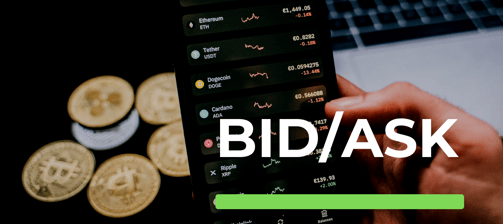

In the context of cryptocurrency trading (and trading in general), the terms "bid" and "ask" are crucial for understanding the dynamics of buying and selling assets on an exchange.
Bid Price: This is the highest price that a buyer is willing to pay for a particular cryptocurrency at a given moment. When you see the bid price, it represents the demand side of the market.
Ask Price: This is the lowest price that a seller is willing to accept for a particular cryptocurrency at a given moment. The ask price represents the supply side of the market.
The difference between the bid and ask prices is known as the spread. The spread is an important indicator of the liquidity of a market; a smaller spread generally indicates a more liquid market with higher trading volume, whereas a larger spread suggests lower liquidity.
Here's an example to illustrate:
If the bid price for Bitcoin (BTC) is $30,000, this means that the highest price a buyer is currently willing to pay for 1 BTC is $30,000.
If the ask price for Bitcoin (BTC) is $30,050, this means that the lowest price a seller is currently willing to accept for 1 BTC is $30,050.
If you want to buy Bitcoin immediately, you would need to pay the ask price. Conversely, if you want to sell Bitcoin immediately, you would receive the bid price.
Liquidity
Liquidity in the cryptocurrency market refers to the ease with which a cryptocurrency can be bought or sold without significantly affecting its price. High liquidity is characterized by a large number of buyers and sellers, which leads to smaller price fluctuations and tighter bid-ask spreads. Conversely, low liquidity means there are fewer market participants, leading to larger price swings and wider spreads.
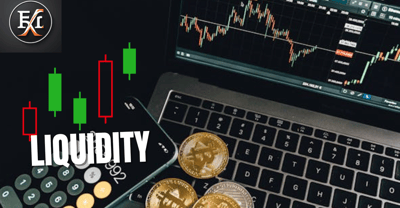

Factors Affecting Liquidity in the Crypto Market
Trading Volume: Higher trading volumes generally indicate higher liquidity, as more transactions are being conducted on the exchange.
Market Depth: This refers to the volume of buy and sell orders at various price levels in the order book. A deep market has a large number of orders close to the current price, which helps to stabilize the price.
Number of Market Participants: More traders (both retail and institutional) contribute to higher liquidity, as there are more buyers and sellers in the market.
Exchange Listings: Cryptocurrencies listed on multiple reputable exchanges tend to have higher liquidity, as they are accessible to a larger pool of traders.
Regulatory Environment: Clear and favorable regulations can boost market confidence and participation, leading to higher liquidity.
Market Sentiment: Positive news and developments can attract more buyers, while negative news can drive away participants, affecting liquidity.
Benefits of High Liquidity
Stability: Prices are more stable and less prone to large fluctuations.
Tighter Spreads: Smaller difference between bid and ask prices, reducing trading costs.
Ease of Entry and Exit: Traders can easily enter or exit positions without significantly affecting the market price.
Risks of Low Liquidity
Price Volatility: Larger price swings can occur due to fewer participants and lower trading volumes.
Slippage: When large orders are placed, they can move the market price, leading to a worse-than-expected execution price.
Difficulty in Execution: Large trades may not be executed fully or may take longer to fill.
Liquidity Pools and Automated Market Makers (AMMs)
In the decentralized finance (DeFi) space, liquidity pools and AMMs (like those used by Uniswap or Sushiswap) play a crucial role in providing liquidity. Liquidity providers deposit pairs of tokens into a pool, and in return, they earn fees from trades that occur within the pool. This mechanism ensures that there is always liquidity available for traders.
Conclusion
Liquidity is a key factor in the health and efficiency of the cryptocurrency market. It affects how easily assets can be traded, the stability of prices, and the overall user experience for traders and investors. Understanding liquidity can help market participants make informed decisions and manage risks more effectively.
Components of an Order Book
Buy Orders (Bids): These are orders from buyers who are willing to purchase a cryptocurrency at various price levels. They are listed from the highest bid price to the lowest.
Sell Orders (Asks): These are orders from sellers who are willing to sell a cryptocurrency at various price levels. They are listed from the lowest ask price to the highest.
Order Types:
Limit Orders: These are orders to buy or sell a cryptocurrency at a specific price or better. They remain in the order book until they are executed or canceled.
Market Orders: These are orders to buy or sell a cryptocurrency immediately at the best available price. They do not appear in the order book because they are executed as soon as they are placed.
Structure of an Order Book
An order book is typically displayed in a tabular format with columns that might include:
Price: The price at which buyers are willing to buy or sellers are willing to sell.
Amount: The quantity of the cryptocurrency that is being offered for buying or selling at a specific price level.
Total: The cumulative quantity of the cryptocurrency that will be bought or sold up to a certain price level.
Importance of the Order Book
Market Transparency: The order book provides visibility into the supply and demand dynamics for a particular cryptocurrency, allowing traders to make more informed decisions.
Price Discovery: It helps in determining the market price of a cryptocurrency through the interaction of buy and sell orders.
Liquidity Measurement: By examining the depth of the order book, traders can gauge the liquidity of the market. A deeper order book generally indicates higher liquidity.
Trade Execution: The order book is used by the exchange to match buy and sell orders, facilitating trade execution.
Market Analysis: Traders can analyze the order book to identify potential support and resistance levels, as well as market sentiment.
Conclusion
The order book is an essential tool in the cryptocurrency market, providing real-time data on buy and sell orders. It plays a critical role in ensuring market transparency, aiding price discovery, measuring liquidity, and facilitating trade execution. Understanding how to read and interpret the order book can give traders a significant advantage in making strategic trading decisions.
Order Book
An order book in the cryptocurrency market is a real-time electronic list of buy and sell orders for a specific cryptocurrency, organized by price levels. It is a crucial component of trading on an exchange, providing transparency and insight into market dynamics.
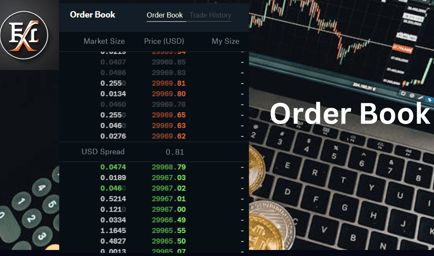

Depth Chart
A depth chart in the cryptocurrency market is a visual representation of the order book, showing the cumulative volume of buy and sell orders at different price levels. It provides a quick and intuitive way to see the market depth, allowing traders to understand the supply and demand dynamics of a particular cryptocurrency

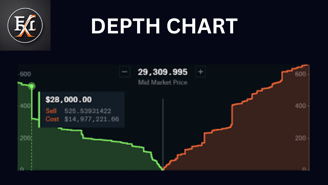
Key Features of a Depth Chart
Buy Orders (Bids): Represented on the left side of the chart, this section shows the cumulative volume of buy orders. It usually appears in green.
Sell Orders (Asks): Represented on the right side of the chart, this section shows the cumulative volume of sell orders. It usually appears in red.
Price Levels: The horizontal axis (x-axis) represents the price levels at which orders are placed.
Order Volume: The vertical axis (y-axis) represents the cumulative volume of orders at each price level.
Market Price: The point where the buy and sell sides meet indicates the current market price of the cryptocurrency.
Interpreting a Depth Chart
Steep Slopes: Steeper slopes on either the buy or sell side indicate higher order volume at those price levels. This suggests strong interest and potentially significant support or resistance.
Flat Slopes: Flatter slopes indicate lower order volume at those price levels, suggesting weaker support or resistance.
Gaps: Large gaps between price levels can indicate areas where the price might move more freely due to a lack of orders.
Benefits of Using a Depth Chart
Quick Visualization: It provides a quick visual summary of the market depth and order book, making it easier to understand the market dynamics at a glance.
Identifying Support and Resistance: By observing the concentration of buy and sell orders, traders can identify potential support and resistance levels.
Market Sentiment: The depth chart can indicate market sentiment by showing where the majority of buy and sell orders are clustered.
Trade Planning: Traders can use the depth chart to plan their trades more effectively by identifying optimal entry and exit points.
Conclusion
A depth chart is a valuable tool for traders, providing a visual representation of the order book and the market depth. It helps traders quickly assess supply and demand, identify support and resistance levels, and plan their trading strategies accordingly. Understanding how to read and interpret a depth chart can enhance a trader's ability to make informed decisions in the cryptocurrency market.
Maker Fee and Taker Fee
In the cryptocurrency market, exchanges often charge two types of fees: maker fees and taker fees. These fees are designed to incentivize different types of trading behavior and help maintain liquidity on the platform.

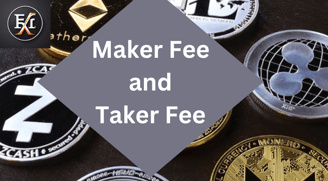
Maker Fee
A maker fee is charged to traders who add liquidity to the order book by placing limit orders that are not immediately matched by existing orders. These orders sit in the order book until another trader places a matching order.
Adding Liquidity: When you place a limit order to buy or sell a cryptocurrency at a specific price, and it is not immediately matched by an existing order, you are considered a "maker" because you are adding liquidity to the market.
Lower Fees: Maker fees are generally lower than taker fees because makers contribute to the liquidity of the exchange, making it easier for other traders to execute their trades.
Taker Fee
A taker fee is charged to traders who remove liquidity from the order book by placing orders that are immediately matched with existing orders. These are typically market orders or limit orders that match with orders already on the book.
Removing Liquidity: When you place a market order to buy or sell a cryptocurrency, or a limit order that matches immediately with an existing order in the order book, you are considered a "taker" because you are removing liquidity from the market.
Higher Fees: Taker fees are usually higher than maker fees because takers consume the liquidity that makers have provided.
Example
Let's consider an example to clarify the difference:
Maker Scenario:
You place a limit order to buy 1 BTC at $30,000.
This order is added to the order book because it doesn't match any existing sell orders.
You pay a maker fee, which might be 0.1% of the trade value.
Taker Scenario:
You place a market order to buy 1 BTC.
Your order matches immediately with an existing sell order at the best available price, say $30,050.
You pay a taker fee, which might be 0.2% of the trade value.
Fee Structure
The specific fee rates for makers and takers vary by exchange. Some exchanges offer tiered fee structures where the fees decrease based on the trader's 30-day trading volume.
Conclusion
Maker and taker fees are integral parts of the fee structure on most cryptocurrency exchanges. They serve to incentivize adding liquidity to the market (makers) and to account for the immediate execution of trades that consume liquidity (takers). Understanding these fees can help traders optimize their trading strategies and minimize costs.
